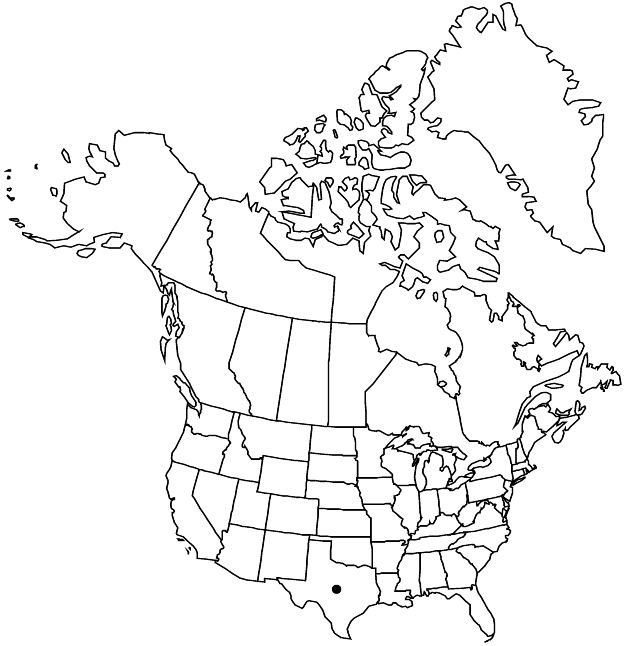Vitis ×champinii
Vigne Amér. Vitic. Eur. 6: 22. 1882.
Plants moderate to high climbing, sparsely branched. Branches: bark tardily exfoliating in shreds; nodal diaphragms 1.5–2.5 mm thick; branchlets terete, sparsely arachnoid, becoming glabrate, growing tips not enveloped by unfolding leaves; tendrils along length of branchlets, persistent, branched, tendrils (or inflorescences) at only 2 consecutive nodes, nodes not red-banded. Leaves: stipules 2–5.5 mm; petiole 1/2 blade; blade usually cordate, sometimes nearly reniform, 5–15 cm, usually 3-shouldered to very shallowly 3-lobed, apex acute to short acuminate, abaxial surface not glaucous, sparsely arachnoid to glabrate, not hirtellous, visible through hairs, adaxial surface usually glabrous. Inflorescences 3–7 cm. Flowers functionally unisexual. Berries black, usually not, sometimes very slightly, glaucous, globose, 12+ mm diam., skin separating from pulp; lenticels absent. 2n = 38.
Phenology: Flowering Apr–May; fruiting Jul–Aug.
Habitat: Well drained, calcareous soils.
Elevation: 200–700 m.
Discussion
Vitis ×champinii is found on and adjacent to the Edwards Plateau and is a hybrid between V. mustangensis and V. rupestris; it is now rare in nature (B. L. Comeaux 1987).
Selected References
None.
